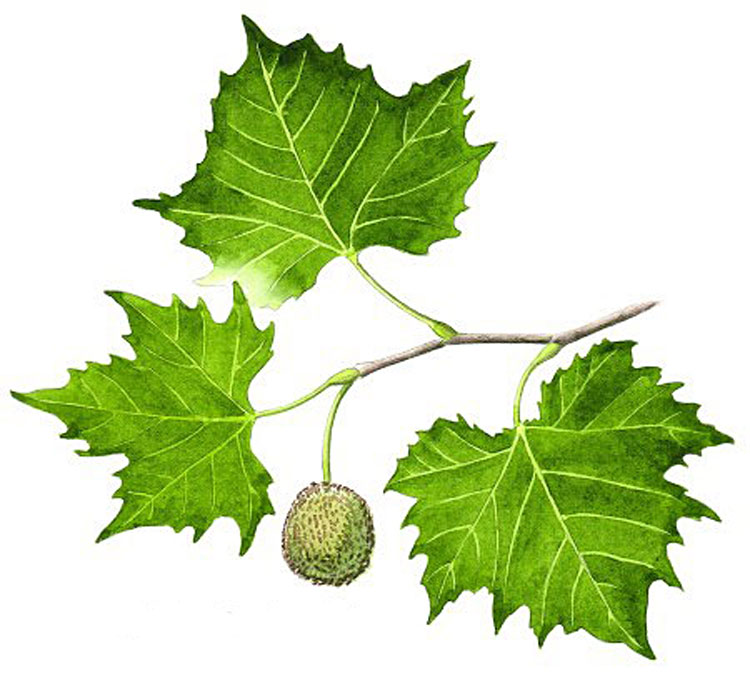
Quick Facts
- Plant Type: Pyramidal, becoming oval or rounded with age
- Foliage type: Deciduous
- Tree height: 75 to 100 feet
- Tree width/spread: 50 feet
- Hardiness: USDA Zones 4 to 9
- Flower Color: Insignificant
- Sun/light exposure: Full sun
- Water requirements: Medium to wet
- Seasonal Interest: Beautiful bark, leaves turn yellow, orange, red and purple
American Planetree (Platanus occidentalis)
The most massive tree indigenous to eastern North America, American Planetree (also known as the American Sycamore) is generally considered too large and too messy for street tree use. Although Tulip Tree may reach similar heights, its trunk diameters are generally smaller.
The signature ornamental feature of this huge tree is its brown bark which exfoliates in irregular pieces to reveal creamy white inner bark. Female flowers give way to fuzzy, long-stalked, spherical fruiting balls filled with tiny seed-like fruits ripen in October and persist into early winter.
Native Americans hollowed out trunks of American Planetree for dugout canoes. The wood has been commercially used for a variety of products including furniture, cabinets, and butcher blocks.
The American Planetree can endure a big city’ tough environment and was formerly extensively planted as a shade tree. However, American Planetree is susceptible to Plane anthracnose disease, an introduced fungus found naturally on the Oriental Planetree. Although rarely killed or even seriously harmed, American Planetree is partially defoliated by the disease leaving it unsightly as a specimen tree. Thus, it is rarely planted today.

